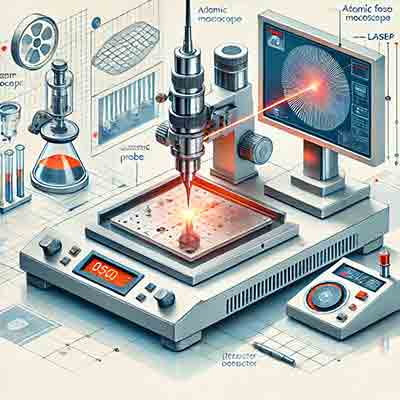What is an Atomic Force Microscope?
An Atomic Force Microscope (AFM) is a high-resolution scanning probe microscope that provides 3D surface topography at the nanometer scale. It uses a sharp tip to measure atomic forces on a sample, offering unparalleled resolution beyond optical diffraction limits.

How Does AFM Work?
- Probe and Cantilever: A sharp tip scans the surface, interacting with atomic forces.
- Laser and Detector: A laser tracks cantilever movements, which are converted into a 3D image.
- Feedback Mechanism: Maintains constant force or distance during scanning.
- Scanning Modes: Includes contact, tapping, and non-contact modes for various sample types.

How University Students Use AFM
- Surface Characterization: Analyzing roughness and nanostructures of materials.
- Nanotechnology Research: Studying properties of graphene, nanotubes, and 2D materials.
- Biological Studies: Imaging cells, proteins, and DNA at the nanoscale.
- Tribology: Investigating friction, adhesion, and wear properties.
Most Common Application
The most common application of AFM is surface topography imaging, used to measure roughness and analyze thin films, semiconductors, and biological specimens.
Why AFM is Valuable
- High Resolution: Enables atomic-scale imaging.
- Versatility: Can study hard, soft, and biological samples.
- Non-Destructive: Ideal for delicate specimens.